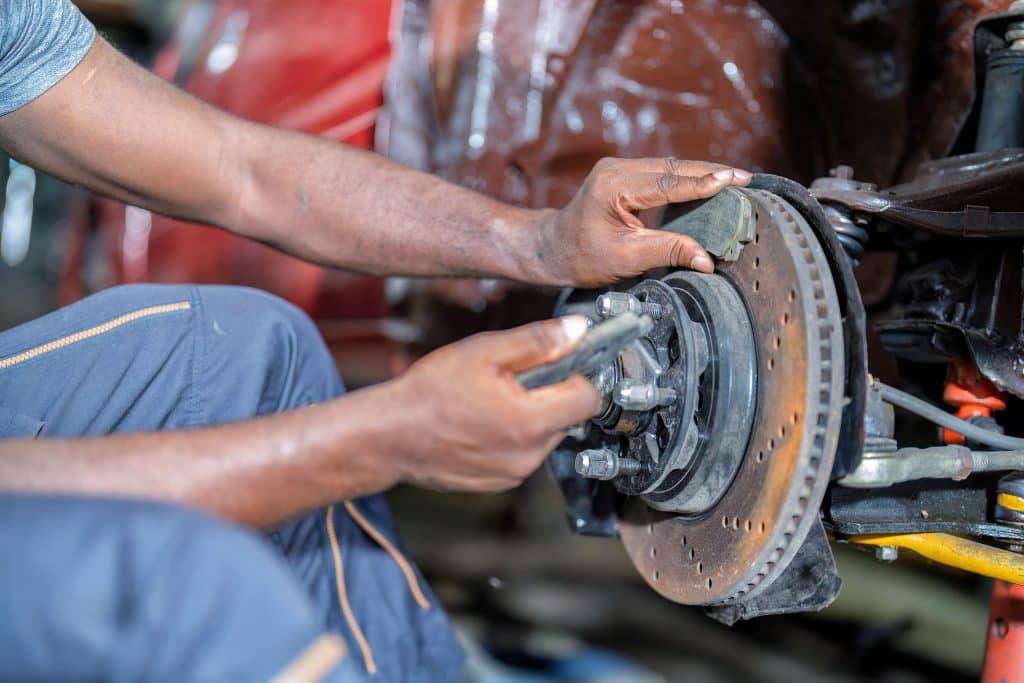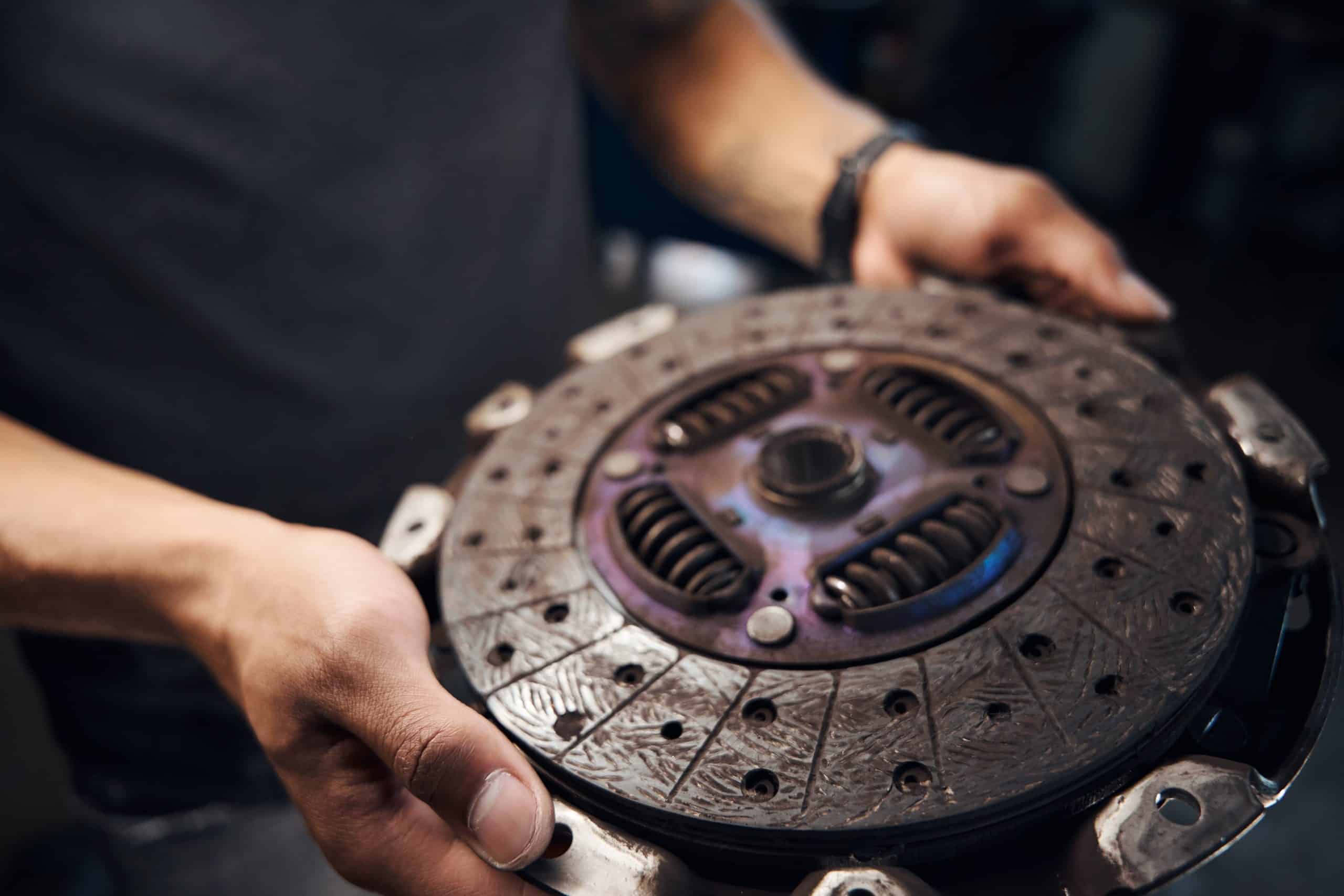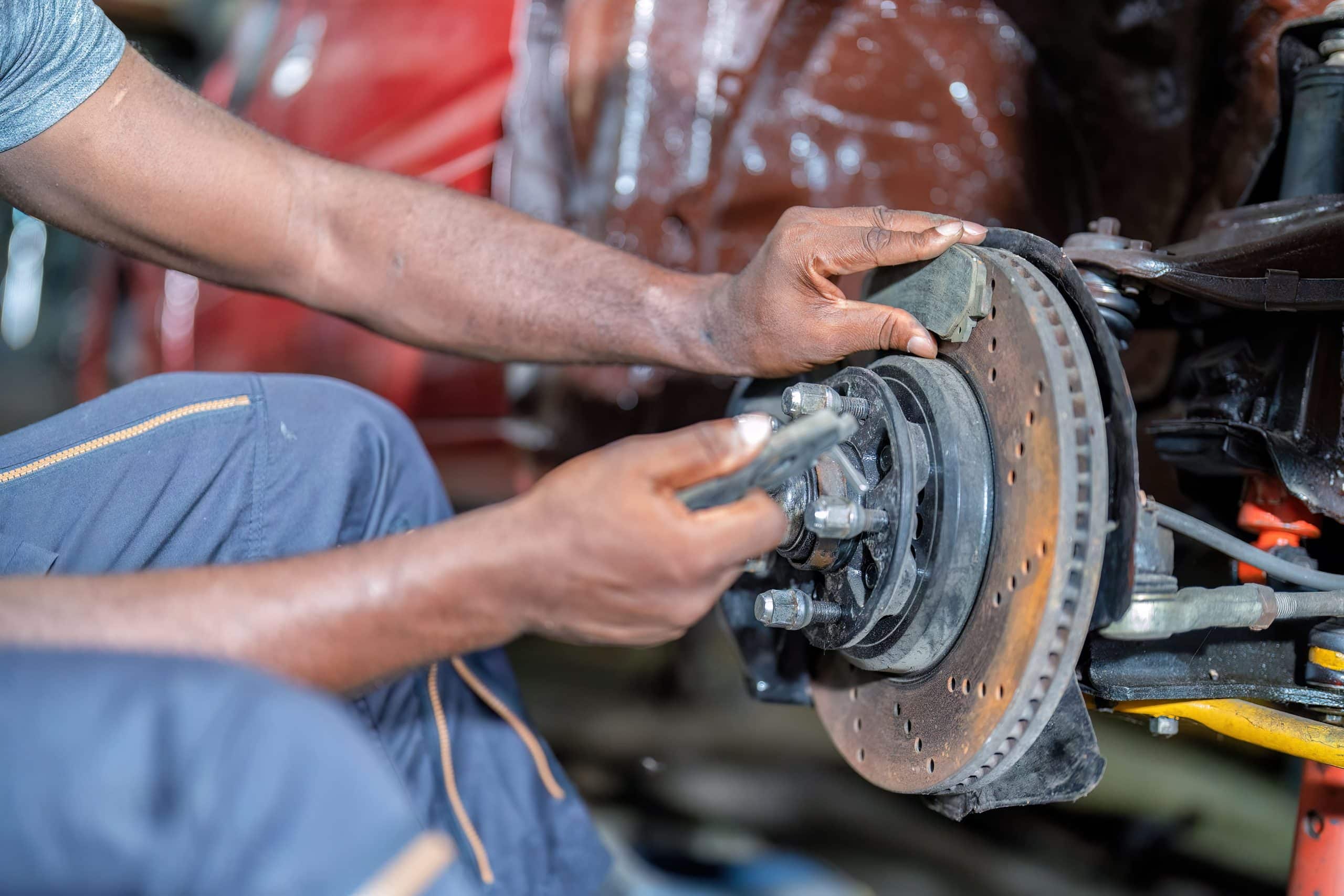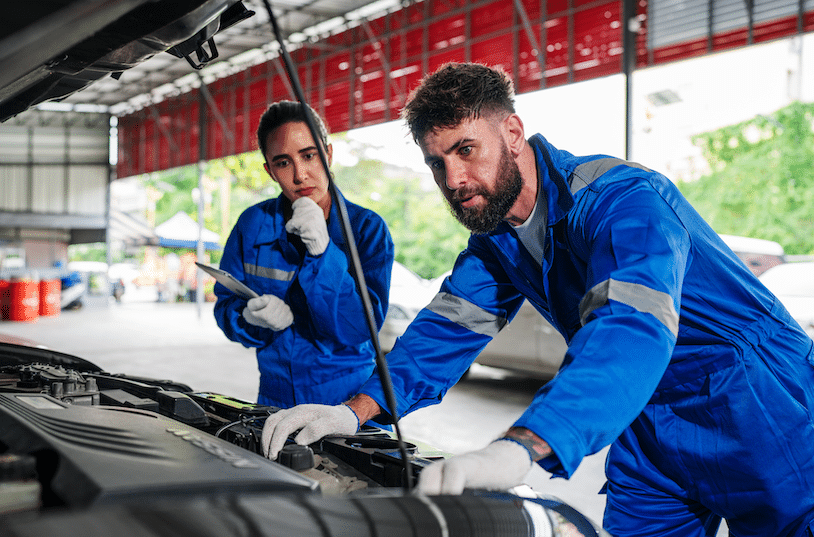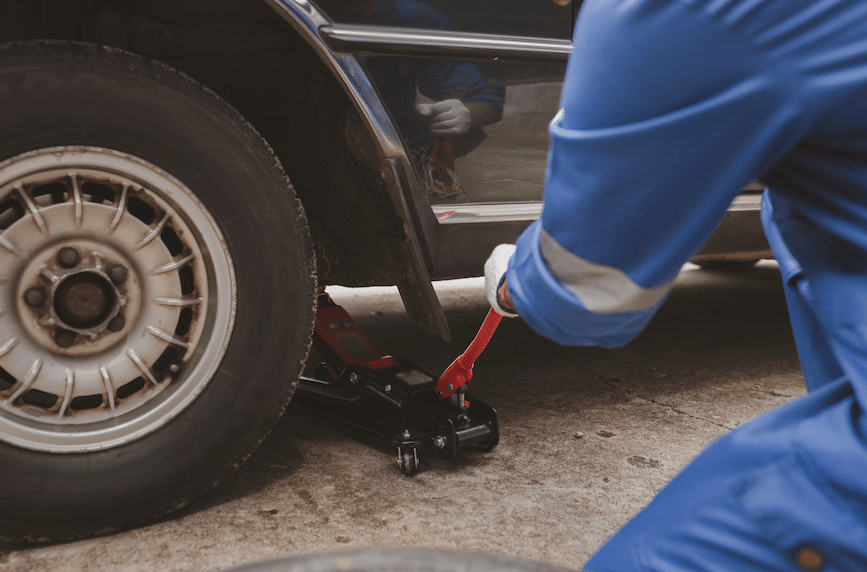Your vehicle’s braking system is undoubtedly its most critical safety feature. Every time you press the brake pedal, you rely on a complex system of components working in harmony to bring your car to a safe stop. Understanding when your brakes need attention and knowing the difference between brake pads and discs can help you maintain optimal braking performance and ensure your safety on the road. In this comprehensive guide, we’ll explore everything you need to know about brake maintenance, replacement indicators, and what to expect during the replacement process.
Understanding Your Braking System
Before discussing when to replace brake components, it’s helpful to understand how modern disc brakes work and the role each component plays.
What Are Brake Pads?
Brake pads are friction material components that press against the brake discs when you apply the brakes. They’re designed to wear down gradually over time, sacrificing themselves to protect the more expensive brake discs. Most modern vehicles use two brake pads per wheel—an inner pad and an outer pad—held in position by the brake calliper.
Brake pads typically consist of a metal backing plate with friction material bonded to it. This friction material is formulated to provide consistent stopping power across various temperatures and weather conditions whilst minimising wear on the brake discs.
What Are Brake Discs?
Brake discs (also called rotors) are circular metal components attached to your wheel hubs that rotate with your wheels. When you apply the brakes, the brake pads clamp onto these discs, creating friction that slows your vehicle. Brake discs are designed to dissipate the tremendous heat generated during braking and must remain smooth and true to function effectively.
Quality brake discs are manufactured from cast iron or composite materials and are precision-machined to ensure consistent thickness and smooth surfaces. Many performance or heavier vehicles feature ventilated discs with internal cooling channels to improve heat dissipation.
How They Work Together
When you press the brake pedal, hydraulic pressure forces the brake calliper pistons to push the brake pads against the spinning brake discs. This creates friction, converting your vehicle’s kinetic energy into heat and bringing you to a stop. The system is carefully balanced to provide controlled, predictable braking performance in all conditions.
Signs Your Brake Pads Need Replacing
Recognising when your brake pads require replacement is crucial for maintaining safe braking performance. Here are the key warning signs every driver should know:
Squealing or Squeaking Noises
Most modern brake pads incorporate wear indicators—small metal tabs designed to make contact with the brake disc when the pad material reaches minimum thickness. This creates a distinctive high-pitched squealing sound, serving as an audible warning that car brake pad replacement is needed soon. If you hear this noise when braking, schedule an inspection promptly.
Grinding or Scraping Sounds
If squealing progresses to a grinding, metal-on-metal sound, the brake pads have worn through completely, and the metal backing plate is now contacting the disc. This situation is dangerous and causes rapid damage to the brake discs, turning what would have been a straightforward pad replacement into a more expensive car brakes replacement job involving both pads and discs.
Reduced Braking Performance
Worn brake pads provide less friction, increasing stopping distances. If you notice you need to press harder on the brake pedal or your car takes longer to stop than usual, your brake pads may be worn beyond their effective operating range.
Vibration or Pulsing
Whilst vibration often indicates warped discs, excessively worn brake pads can also cause pulsing sensations through the brake pedal or steering wheel, particularly if wear has been uneven.
Dashboard Warning Light
Many modern vehicles feature brake pad wear sensors that trigger a dashboard warning light when pads reach minimum thickness. Never ignore this warning—it’s telling you that car brake pad replacement is required immediately.
Visual Inspection
If you can see through your wheel spokes, look at the brake pads. You should see at least 3mm of pad material. If the pads appear thinner than this, they need replacing. Professional inspection is recommended if you’re unsure.
Pulling to One Side
If your vehicle pulls to the left or right when braking, this could indicate uneven brake pad wear or a seized calliper, requiring immediate professional attention.
Signs Your Brake Discs Need Replacing
Brake discs typically last longer than pads—often two or three sets of pads per set of discs—but they don’t last forever. Here’s when brake disc replacement becomes necessary:
Scoring or Grooving
Deep grooves or scoring on the disc surface indicate excessive wear or damage from worn-through brake pads. Whilst light surface scoring can sometimes be machined away, deep grooves usually require brake disc replacement.
Warping
Warped discs cause a pulsating sensation through the brake pedal and steering wheel when braking. Warping occurs from excessive heat or uneven cooling and affects braking smoothness and efficiency. Severely warped discs must be replaced, though slight warping can sometimes be corrected by machining if sufficient disc thickness remains.
Minimum Thickness Exceeded
Every brake disc has a minimum thickness specification stamped on it. Once wear reduces the disc below this measurement, replacement is mandatory for safety reasons, as the disc may crack or fail under braking stress.
Cracks or Heat Spots
Visible cracks radiating from the disc centre or dark, discoloured heat spots on the braking surface indicate thermal stress and metal fatigue. These discs should be replaced immediately as they could fail catastrophically during heavy braking.
Rust and Corrosion
Surface rust on discs is normal if a vehicle hasn’t been driven for a few days and usually clears with a few brake applications. However, deep rust pitting or significant corrosion, particularly around the disc centre and edges, can weaken the disc structure and necessitate replacement.
Excessive Lip Formation
As brake pads wear down the disc surface, an unworn lip forms around the disc’s outer edge. Whilst some lip is normal, an excessive lip indicates significant disc wear and often means the disc has reached its minimum thickness specification.
Age and Mileage
Even if showing no obvious problems, brake discs should be carefully inspected if they’re more than five years old or have covered more than 50,000 miles. Preventative brake disc replacement during routine brake service can avoid future problems and ensure optimal braking performance.
How Long Should Brake Pads and Discs Last?
The lifespan of brake components varies significantly based on several factors:
Typical Lifespan for Brake Pads
Most brake pads last between 25,000 and 70,000 miles, though this varies considerably based on:
- Driving style: Heavy braking and aggressive driving wear pads faster
- Driving environment: Urban stop-start driving wears pads more quickly than motorway cruising
- Vehicle weight: Heavier vehicles place more demand on brakes
- Pad quality: Premium brake pads often outlast budget alternatives
- Terrain: Hilly or mountainous driving increases brake wear
Front brake pads typically wear faster than rear pads because the front brakes handle approximately 70% of braking effort due to weight transfer during deceleration.
Typical Lifespan for Brake Discs
Brake discs generally last 50,000 to 70,000 miles but can exceed 100,000 miles with careful driving and quality components. Many drivers can expect to replace brake pads two or three times before needing brake disc replacement.
However, if brake pads are allowed to wear too thin before replacement, the resulting damage to the discs can necessitate simultaneous replacement of both components, significantly increasing the cost of car brakes replacement.
The Brake Replacement Process at a Professional Garage
Understanding what happens during car brake pad replacement or brake disc replacement helps you appreciate the complexity of the work and why professional service is recommended. Here’s what you can expect when you bring your vehicle to a reputable garage like First Auto Centre:
Step 1: Initial Inspection and Assessment
Upon arrival, our technicians begin with a comprehensive brake system inspection:
- Measuring brake pad thickness at all four wheels
- Assessing brake disc condition, measuring thickness, and checking for damage
- Testing brake fluid condition and level
- Inspecting brake callipers, slides, and pistons for proper operation
- Checking brake hoses and pipes for leaks or damage
- Testing handbrake operation and adjustment
This thorough assessment determines exactly which components require replacement and identifies any additional issues needing attention.
Step 2: Vehicle Preparation
Your vehicle is safely raised on a professional lift or supported on axle stands, and the wheels are removed to provide full access to the brake components. The braking system is carefully inspected again with the wheels removed, allowing detailed examination of all components.
Step 3: Brake Pad Replacement
For car brake pad replacement, our technicians:
- Safely retract the brake calliper pistons using specialist tools
- Remove the calliper mounting bolts and secure the calliper safely
- Extract the worn brake pads and inspect the calliper hardware
- Clean all mounting surfaces and slides to ensure smooth operation
- Apply high-temperature brake grease to calliper slides and contact points
- Install new brake pads with all necessary fitting kits and anti-rattle hardware
- Inspect and clean or replace calliper guide pins
- Refit the calliper and torque all bolts to manufacturer specifications
Step 4: Brake Disc Replacement
When brake disc replacement is required, additional steps include:
- Removing the brake calliper and securing it safely without straining the brake hose
- Removing the calliper mounting bracket
- Extracting the worn brake disc (which may require careful removal if corroded)
- Cleaning the wheel hub mounting surface thoroughly
- Fitting the new brake disc, ensuring it sits flat against the hub
- Reinstalling the calliper bracket with new mounting hardware if required
- Completing the brake pad installation process
Step 5: Reassembly and Testing
After fitting new components:
- All bolts are torqued to precise manufacturer specifications
- Wheels are refitted and torque properly
- The brake pedal is pumped to restore hydraulic pressure
- Brake fluid level is checked and topped up if necessary
- A comprehensive brake system test is performed
Step 6: Road Testing
Before returning your vehicle, a qualified technician conducts a road test to ensure:
- Brakes apply smoothly and evenly
- No unusual noises or vibrations occur
- Stopping distances are appropriate
- The handbrake functions correctly
- No dashboard warning lights illuminate
Step 7: Bedding-In Process
New brake pads and discs require a bedding-in period where the friction surfaces mate together properly. We’ll advise you on the correct bedding-in procedure, which typically involves:
- Avoiding heavy braking for the first 200 miles
- Performing several gentle stops from moderate speeds
- Allowing brakes to cool between applications
- Avoiding extended high-speed braking
Proper bedding-in ensures optimal braking performance and component longevity.
Why Professional Brake Replacement Matters
Whilst some mechanically minded individuals attempt DIY brake work, professional car brakes replacement offers significant advantages:
Safety Assurance: Brakes are safety-critical components. Professional installation ensures everything is fitted correctly and functions properly.
Proper Equipment: Specialist tools are required to safely retract calliper pistons, measure disc thickness accurately, and torque bolts precisely.
Quality Parts: Reputable garages source quality brake components that meet or exceed original equipment specifications.
Comprehensive Inspection: Professionals inspect the entire brake system, identifying issues you might miss.
Warranty Protection: Professional installation includes warranties on parts and labour, protecting your investment.
Brake Fluid Service: Professionals can simultaneously service brake fluid if required, ensuring optimal hydraulic system performance.
Schedule Your Brake Replacement at First Auto Centre
At First Auto Centre Ltd in East Ham, we specialise in all aspects of car brakes replacement, from straightforward car brake pad replacement to comprehensive services involving brake disc replacement, callipers, and hydraulic components. Our experienced technicians use only quality brake components and follow precise manufacturer specifications to ensure your braking system performs safely and reliably.
We understand that brake problems can be worrying and potentially dangerous, which is why we offer prompt appointments and competitive pricing for all brake services. Whether you’ve noticed warning signs or your brakes are simply due for inspection, we’re here to help.
Don’t compromise on brake safety—schedule your brake inspection or replacement with First Auto Centre today. Our team will thoroughly assess your braking system, provide honest recommendations, and complete any necessary work to the highest standards. We’ll explain exactly what work is needed and why, with transparent pricing and no hidden costs.
Brake problems don’t improve with time—they only get worse and more expensive to repair. Contact First Auto Centre now to book your brake replacement service and drive away with confidence in your vehicle’s stopping power.
Conclusion
Understanding when to replace brake pads and discs, recognising the warning signs, and knowing what to expect during professional car brakes replacement empowers you to maintain your vehicle’s most important safety system. Regular brake inspections, prompt attention to warning signs, and timely replacement of worn components ensure optimal braking performance and protect you and your passengers.
Remember: your brakes are too important to neglect. If you’ve noticed any of the warning signs discussed in this guide, don’t delay—schedule a professional brake inspection today. At First Auto Centre, we’re committed to keeping you safe on the road with expert brake services you can trust.


